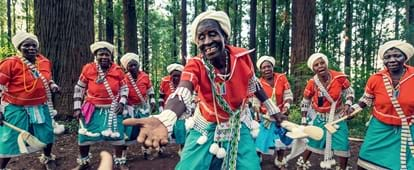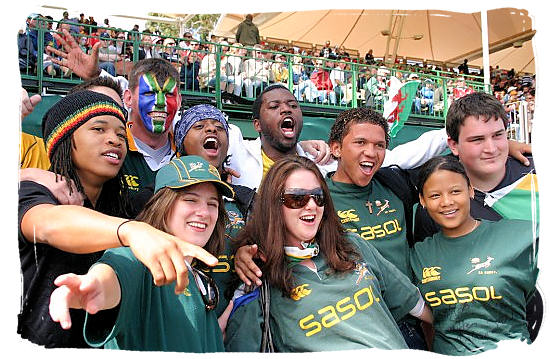10 Simple Techniques For South African Culture Today
Table of ContentsThe 9-Second Trick For South African Culture TodayExamine This Report on South African Culture TodayThe 7-Minute Rule for South African Culture TodayThe smart Trick of South African Culture Today That Nobody is Talking AboutSome Of South African Culture TodaySee This Report about South African Culture Today
This follows with vocal singing and drum pounding. The bride and bridegroom then meet the elders and speak concerning the importance of their union. A matter of importance in Zambian towns is the diing of loved ones. All members of the village put money, time and initiative with each other for the funeral of the deceased.During the mourning period; men stay outside your home and the ladies remain inside your house of the deceased. After speaking regarding the deceased, the village strolls to the location of burial to state their last goodbyes. Music and dancing is a very vital element of the Zambian culture. The various tribal systems have their own dance types; nonetheless, makishi prevails among all people.
Facts About South African Culture Today Uncovered
When it comes to music, drums are utilized one of the most, with a selection of drumming events. In Zambia, bulk of individuals are Christian; Protestant and Roman Catholic. There are small groups of Muslims and Hindus, with the remainder following regional indigenous tribal ideas.

South African heritage and culture is immensely varied, and includes various teams of individuals that each have their own practices and beliefs. Having such a diversity of individuals and cultures is what makes South Africa so unique. In real feeling of the phrase, we are a rainbow nation.
Making it the 7th on the list of countries with the most Portuguese individuals in it outside of Portugal. Portuguese is not only a culture, but it is additionally a language and a citizenship. Portuguese individuals stem from the country of Portugal in Europe, nonetheless, due to Portugal (like numerous various other countries in Europe) exploring the globe and conquering other nations during the 15th 20th centuries, South Africa has what we call Portuguese South African's living in it.
Facts About South African Culture Today Uncovered
Amongst the prominent features of the topography is a plateau that covers virtually two thirds of the center of the country. The plateau complex increases towards the southeast, where it culminates in the Drakensberg range, part of an escarpment that divides the plateau from the coastal locations. The Drakensburg consists of Sparkling wine Castle, the greatest top in the country.
The area north of the Witwatersrand, called the bushveld, slopes downward from eastern to west towards the Limpopo River, which forms the worldwide boundary. The western section of the plateau, the middleveld, likewise comes down towards the west and varies in altitude between the highveld and bushveld. Between the Drakensburg and the eastern and southern coastline, the land comes down to the sea.
Nearer the shore there is a low-lying plain called the eastern lowveld. Southwest of the plateau the country becomes gradually much more arid, paving the way to the stony desert of the Great Karroo, bordered on the east by the reduced, better watered plateau of the Little Karroo. Dividing the completely dry southern interior from the sandy coastal of the southerly shore and West Cape is an additional variety, the Langeberg.
The 4-Minute Rule for South African Culture Today
The country's racially, ethnically, and politically split history has actually produced nationwide and subnational signs that still function as icons of the country, and others icons that are accepted just by specific groups. The monoliths to white settler occupation and political dominance, such as the Afrikaner Voortrekker ("leader") Monolith in Pretoria and the Rhodes Monolith honoring the British colonial empire builder and Cape prime preacher Cecil Rhodes, continue to be sectarian signs.
The initial contemporary inhabitants were the San ("bushman") hunter-gatherers and the Khoi ("Hottentot") peoples, that rounded up animals (South African culture today). The San may have been existing for thousands of years and left evidence of their presence in countless old cave paintings ("rock art"). Bantu-speaking clans that were the forefathers of the Nguni (today's amaZulu, amaXhosa, amaSwazi, and vaTsonga peoples) and Tswana-Sotho language teams (today's Batswana and Southern and Northern Basotho) migrated down from eastern Africa as early as the fifteenth century

Both previous republics of the link Orange Free State and Transvaal (South African Republic) were developed by Afrikaner inhabitants that defeated and dispossessed the Basotho and Batswana. Lesotho would certainly have been by force included right into the Orange Free State without the expansion of British security in 1869. The ultimate unification of the nation arised from the South African War (18991902) between the British and the two try here Afrikaner republics, which decreased the country to spoil at the beginning of the twentieth century.
Afrikaners traditionally considered themselves the only real South Africans and, while providing complete citizenship to all locals of European descent, rejected that condition to people of color until the autonomous transition of 1994. British South Africans keep a sense of social and social link to Great Britain without damaging their identification as South Africans.
The Buzz on South African Culture Today
The variety and fragmentation within ethnic collections and the equilibrium of stress between those teams during the twentieth century prevented interethnic civil problem. While intergroup stress over sources, entitlements, and political prominence remain, those problems are as likely to match Zulu versus Zulu as Zulu against Xhosa or African versus Afrikaner.
From colonial India, British merchants and administrators brought the bent metal ornamental roofs and slender lace job columns that still typify the outdoor patios of cottages arounds and cities throughout the nation. Holy places add an essential building aspect also in the tiniest towns. Along with the soaring steeples and traditional stonework of Afrikaans Dutch Reformed churches, Anglican churches, synagogues, mosques, and Hindu shrines offer selection to the religious building scene.

Slaughtering and the brewing of conventional cereal beer are YOURURL.com vital in safeguarding the participation and goodwill of the ancestors who are considered the guardians of good luck, prosperity, and well-being. Indian neighborhoods preserve their native culinary practices and apply them on Islamic and Hindu routine and ritualistic events. Afrikaners and Coloured people gather at weekends and unique occasions at multifamily barbecues called braais, where area bonds are reinforced.
Due to the fact that this was the main financial business of both black Africans and white homesteaders, dispute between those groups fixated the property of grazing land and animals. In 1867, the largest diamond down payments worldwide were found at Kimberley in the west central location. The wide range from those fields helped fund the exploitation of the best gold coral reef on the planet, which was discovered on the Witwatersrand in 1886.
The Greatest Guide To South African Culture Today
This resulted in misconceptions and intentional misrepresentation in the ventures of white inhabitants and government authorities with African principals during the early american period (South African culture today). In the facility of African reserves, some elements of public and chiefly "tribal depend on" land tenure were protected, and also in white country areas, types of public tenure were still practiced in areas with African areas
After the democratic improvement of 1994, programs for land restitution, redistribution, and reform were set up, but development has actually been sluggish. The white minority still regulates eighty percent of the land. In the wake of agricultural land invasions in Zimbabwe, the Division of Land Matters has promised to speed up land redistribution.